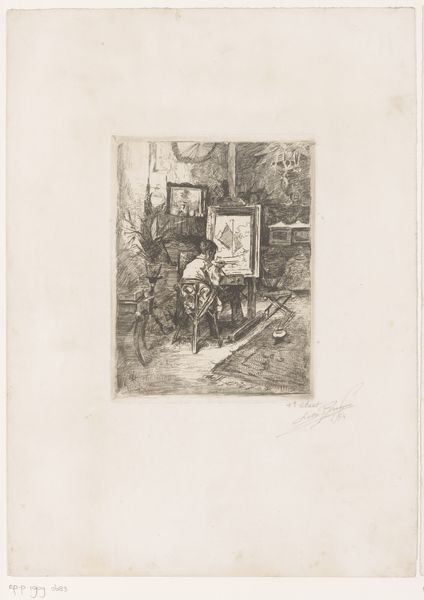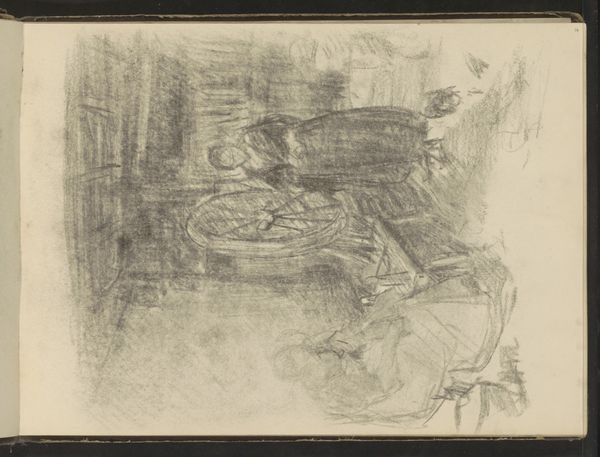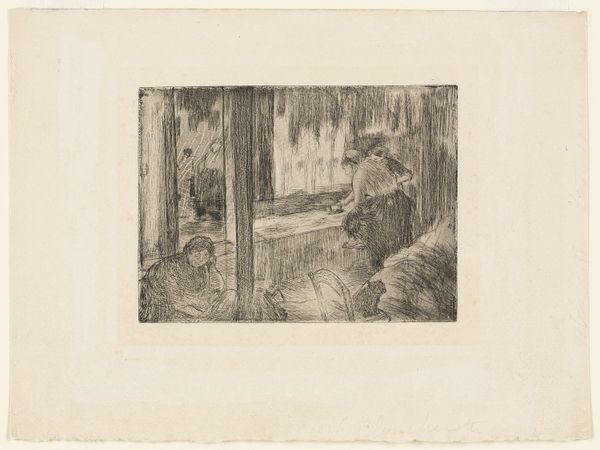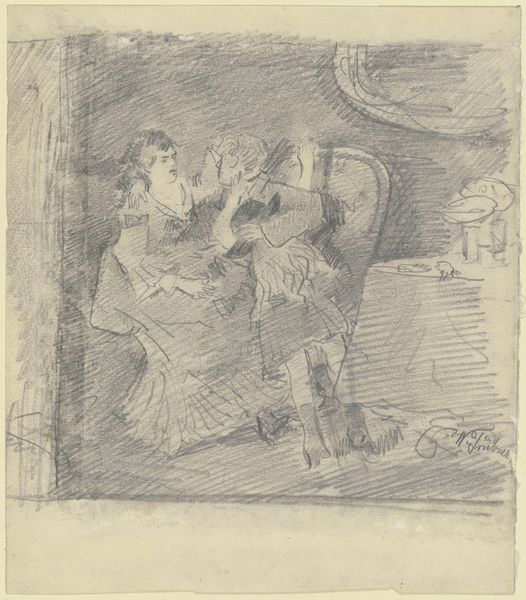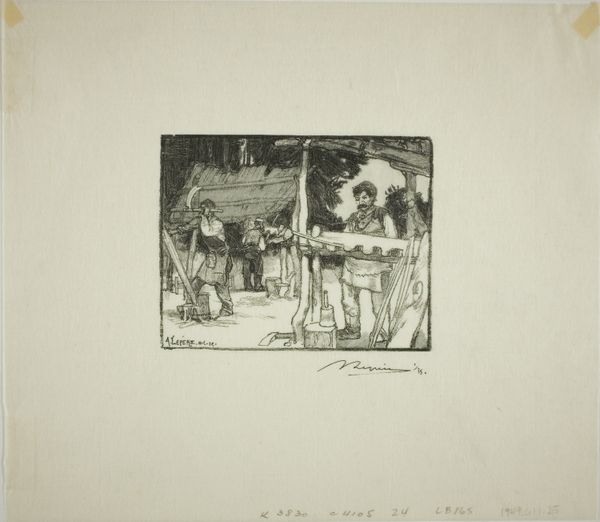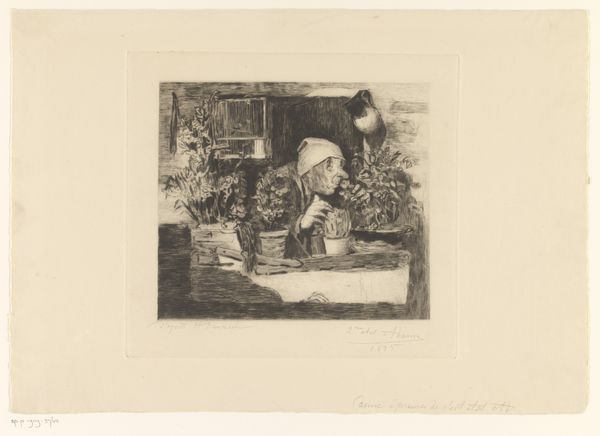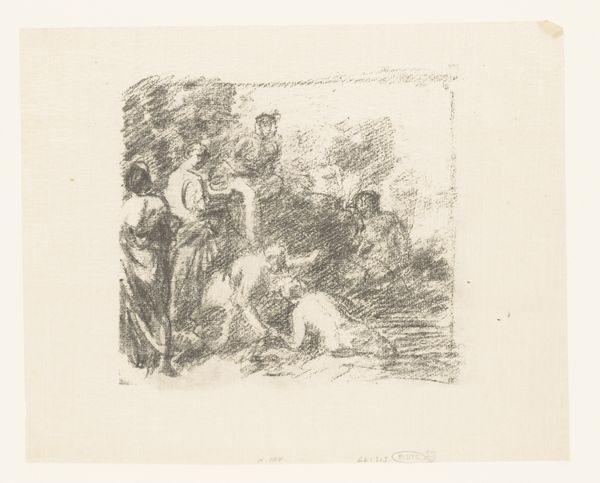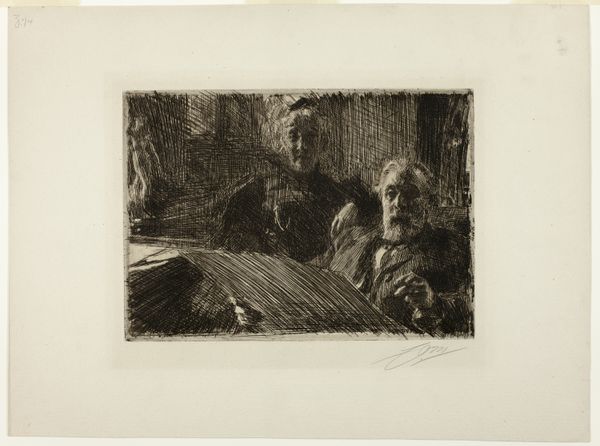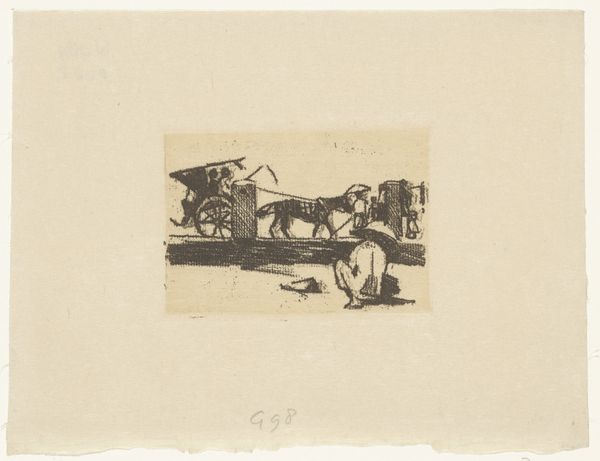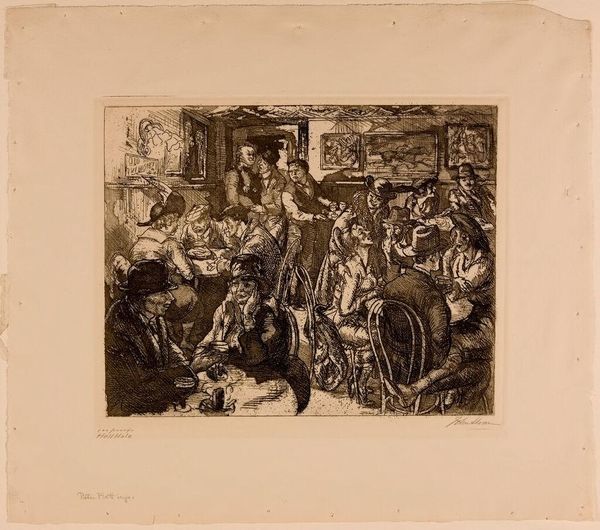
drawing, print, etching, paper, ink
#
drawing
# print
#
impressionism
#
etching
#
paper
#
ink
#
genre-painting
Dimensions: 78 × 128 mm (image); 98 × 138 mm (plate); 129 × 142 mm (sheet)
Copyright: Public Domain
Curator: Anders Zorn created this etching, entitled "The Little Brewery," in 1890. It's a genre painting offering a glimpse into a bustling interior scene rendered in ink on paper. Editor: Ah, my first impression is... busy! But in a cozy way. The strokes are like quick glances, capturing the hustle and bustle. The atmosphere feels warm, maybe a little boisterous? I can almost smell the yeast and hear the chatter. Curator: That warmth likely resonates with Zorn's intent. He often depicted scenes of everyday life, elevating ordinary people and settings to the realm of art. Genre painting like this really took off in the 19th century as art started to move away from only depicting historical or religious subjects. Editor: It definitely has that sense of capturing a specific moment, right? Look at the way the figures are arranged – some actively working, others relaxing in the background. It’s like he's giving us permission to eavesdrop on their day. Curator: And Zorn's skillful etching technique lends itself perfectly to that intimate feel. The dense network of lines creates a sense of depth and texture, but it also allows for areas of light and shadow that create a captivating contrast and give energy to the overall image. Editor: The etching reminds me of controlled chaos! All those lines giving shape to form, giving a feeling of controlled wildness and making me want to step into this world. The looseness of it all – so refreshing! I like it more each time I look at it. Curator: The composition reflects the social hierarchies within the brewery. The central figure, perhaps the brewmaster’s wife, is elevated and commanding, whereas other patrons are literally backgrounded. So this is as much a glimpse of production as it is of society itself. Editor: Knowing that shifts my perception, absolutely. I like how my first, gut feeling response meshes with the history to offer something far richer. Curator: Ultimately, pieces like this challenge the notion of who and what is "worthy" of representation in art. Zorn, by choosing to depict ordinary working-class people in their daily environment, asserted their inherent value and significance. Editor: Yeah. You know, sometimes the most profound stories are found in the simplest of moments. Thank you for adding richness to that. Curator: Indeed. Every line and shadow has something to tell.
Comments
No comments
Be the first to comment and join the conversation on the ultimate creative platform.

